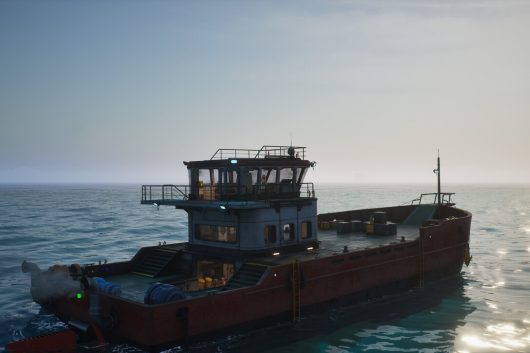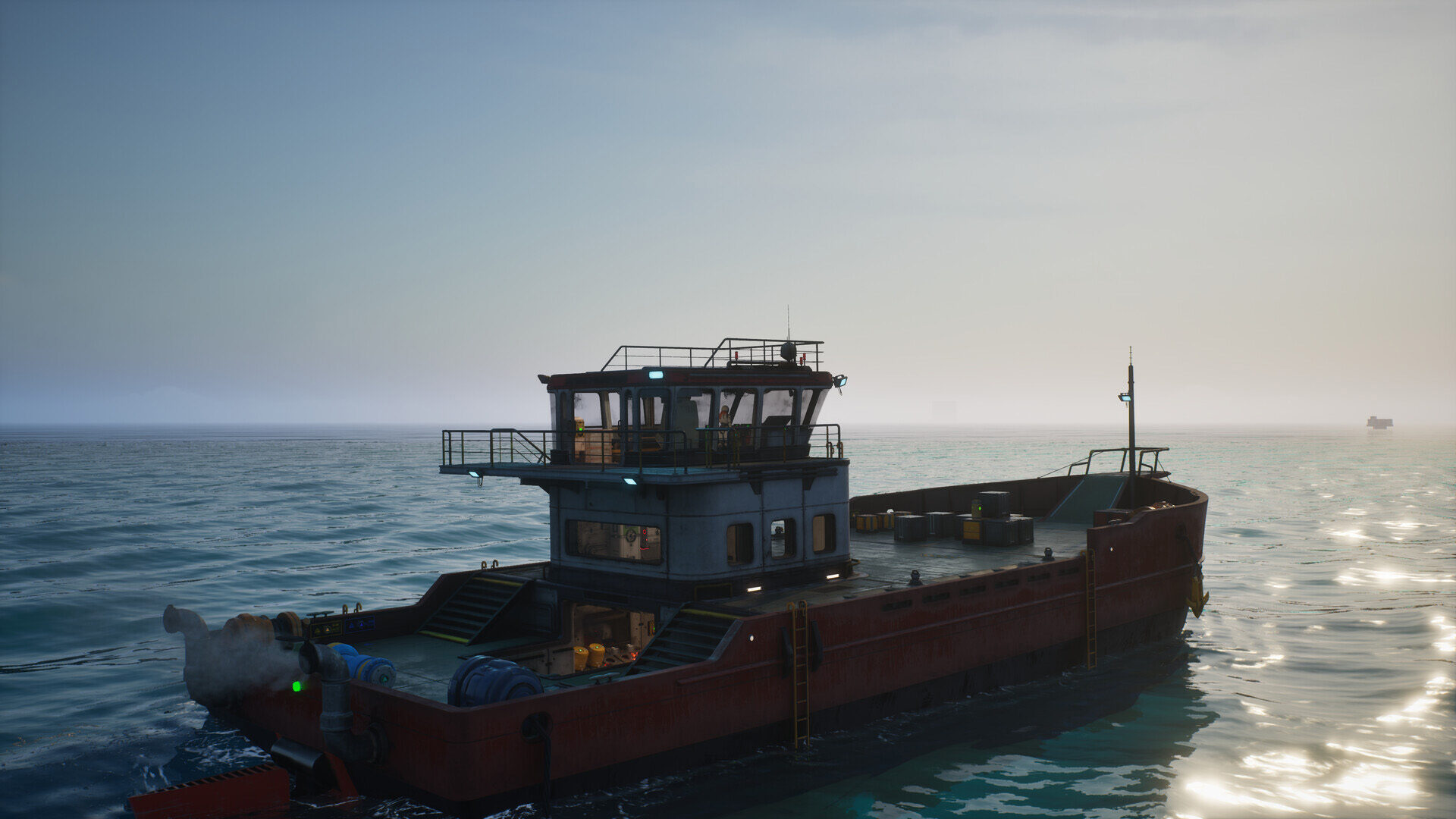


When I initially encountered *The Last Caretaker*, I found myself a bit uncertain about its nature. From the trailers I had seen, I presumed it was a game focused on mechanical optimization—something akin to *Factorio*—but then it took a bizarre survival-horror turn that seemed more aligned with *The Forest*. Intrigued, I had to explore further.
I was taken aback by how deeply *The Last Caretaker* captivated me. It’s a title that conveys a tremendous sense of scale, yet it maintains a serene and carefully constructed atmosphere that almost becomes background noise, and before you realize it, you’ve invested hours into it. There’s plenty to appreciate about *The Last Caretaker*, along with a few issues that need addressing—fortunately, it remains in [Early Access](https://www.cgmagonline.com/tag/early-access/).
*The Last Caretaker* presents a relatively straightforward narrative. Players assume the role of a robotic assistant who awakens on a forsaken rig adrift in a vast ocean. With no obvious signs of life around, the player is charged with mending a docked vessel and venturing into the sea in hopes of re-establishing connections with any remaining functional systems—and potentially saving the life that exists on this submerged planet.
It’s a remarkable introduction, adeptly capturing the atmosphere and essence of the game while unveiling aspects of its narrative through player interaction. The player is solitary in a realm that is both unwelcoming and barren, laboring diligently to maintain some small portion of it. There’s nothing particularly terrifying about the experience, yet an unremitting sense of obligation prevails—because you are, quite literally, the last remaining entity to act.
As a robot, the player swiftly comprehends the methodical, repetitive cadence of the story through gameplay, but in a manner that feels tranquil and fulfilling. Although players technically operate under a time constraint, there’s no real urgency—robots are ageless. The tasks of exploration, building, and restoration come effortlessly, as if they are merely part of the Caretaker’s inherent design. Players are, in essence, fulfilling its purpose. There are mysteries to uncover regarding what transpired in the world, and outcomes for tasks performed well or poorly, but everything progresses so seamlessly that I eventually ceased to focus intently—without ever experiencing detachment.
The gameplay presents a rewarding blend of exploration, mining, and crafting, albeit in a somewhat unconventional fashion. Players traverse extensive oceans in search of structures containing items that can be dismantled into scraps to craft more valuable and efficient tools. Certain locations necessitate electricity to operate machinery or unlock doors, and players can either scavenge for old batteries or develop sophisticated systems to facilitate exploration.
At its essence, *The Last Caretaker* revolves around connections. One of the key items players can discover or create is cable, available in various types. Establishing energy sources and efficiently running cables enhances the game’s technical complexity, but it also aligns thematically. I couldn’t help but chuckle when I realized I was losing health because my battery level had plummeted, necessitating that I connect to a power source.
“The Last Caretaker is the first explorative crafting game in a long time that resonated with me as *No Man’s Sky* did.”
Nevertheless, *The Last Caretaker* centers on building connections throughout a waterlogged world—gradually reviving it by energizing abandoned structures, discovering means to create artificial life, and eventually launching that life into space to provide it an opportunity for sustainable growth. The gameplay loop is so engaging that it becomes almost instinctual; it transforms into a part of your programming.
However, *The Last Caretaker* also incorporates combat, which is subpar. It leaves me wishing it were entirely absent. Players begin with a weak melee attack, which is inexplicably assigned to the C key on PC by default. Given that most enemies are merely puddles of goo, striking anything feels insubstantial and lacks impact. The melee hitbox is also deceptive, rendering exploration in hostile settings particularly unenticing.
It doesn’t take long before you can craft a firearm, yet the guns themselves feel nearly ineffective—the initial Electricity Gun you acquire depletes batteries so rapidly that you’re fortunate if you can defeat one goo pile before it’s entirely drained. I feel that if *The Last Caretaker* aims to emulate anything from [*No Man’s Sky*](https://www.cgmagonline.com/articles/features/learned-stop-worrying-love-no-mans-sky/), it should provide players with some form of ranged weapon from the outset or SIGNIFICANTLY downplay combat.
In terms of visuals, there isn’t much to elaborate on regarding *The Last Caretaker*. Its graphics are striking yet fairly conventional.
No Comments
To comment you need to be logged in!